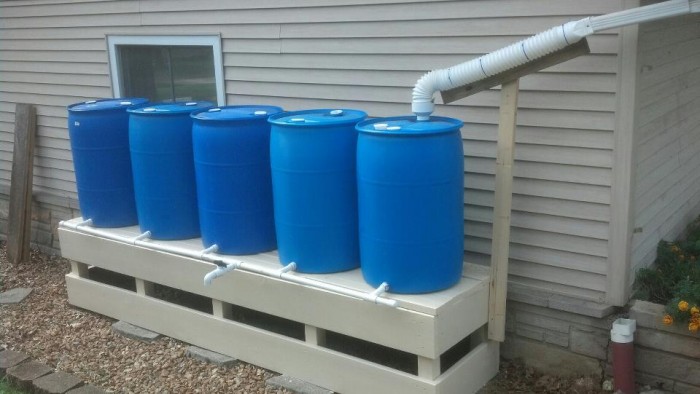
No matter the situation, every prepper has the same thing at the top of his list for an TEOTWAWKI situation: water. Every well-informed prepper also knows that when it comes to water storage is not an easy thing. Where will you store it? How much is enough? In order to avoid a situation where you go without something potentially necessary to your survival in order to make room for your 200 gallons of conserved tap water (and even that would run out eventually), let me propose a different solution: rainwater.
Now I know what you’re thinking; rainwater contains all sorts of pollutants you don’t want to take into your system, not to mention what it’s picked up on it’s way down. These are good concerns to have, but nothing a quality filtering system can’t take care of. Don’t get me wrong, it isn’t as simple as using a bucket to catch the rainwater running off of your roof- that is something I would 100% discourage. In addition to all the contaminants that the water would carry off with it- bugs, dirt, and animal feces- the water could also be altered depending on what type of roof you have, resulting in things such as lead or arsenic poisoning.
I personally would only feel okay with drinking unfiltered rainwater off of a roof made of steel or glazed tile. Extreme caution is recommended for roofs that have been treated for rot-resistance, are made from galvanized metal, copper, concrete tiles, or asphalt shingles, or consist of a flat, tar roof. Make sure that rain water is completely filtered before making use of it.
Due to the many concerns, here a some things you need to remember if you decide this method is right for you:
1: Allow the rain five minutes to run over your roof and remove large particles before collecting your water.
2: Take a screen to the water afterward to remove anything that may have gotten through (leaves, bugs, etc).
3: Run the water through an effective and trusted filtration system. Remember, this is for your and your family’s safety.
I would suggest keeping your barrel/bucket/water-catching device in the shade as much as possible to minimize sunlight-induced algae growth. You could also paint the container black (or simply purchase a black container to begin with) to further this effect; other than that, this project doesn’t require anything fancy. You may also need to invest in a rain diverter depending on the gutter system of your home.
You’ll need to place your container on a stable, level base for when you’re collecting water as it will become extremely heavy. That element should be in the back of your mind all the time. Depending on what size collector you’re using, you could find yourself with 500 pounds of water weight and no way to move it. In an event where you are one of the few people with access to fresh water, I would recommend going about your harvesting project discreetly and never leaving it out in the open. This opens the door for trouble, and will likely leave you worse off than the guy who now has your bucket.
Ps: As we said above, there are many kinds of roofing that could cause issues for water harvesters, and because of this many government officials are trying to outlaw the practice in their areas. This most likely won’t be relevant in an apocalyptic situation, but for everyday use you should make sure you’re in compliance with your state laws to avoid stumbling into unnecessary legal trouble that could’ve been prevented by simply holding a permit.

